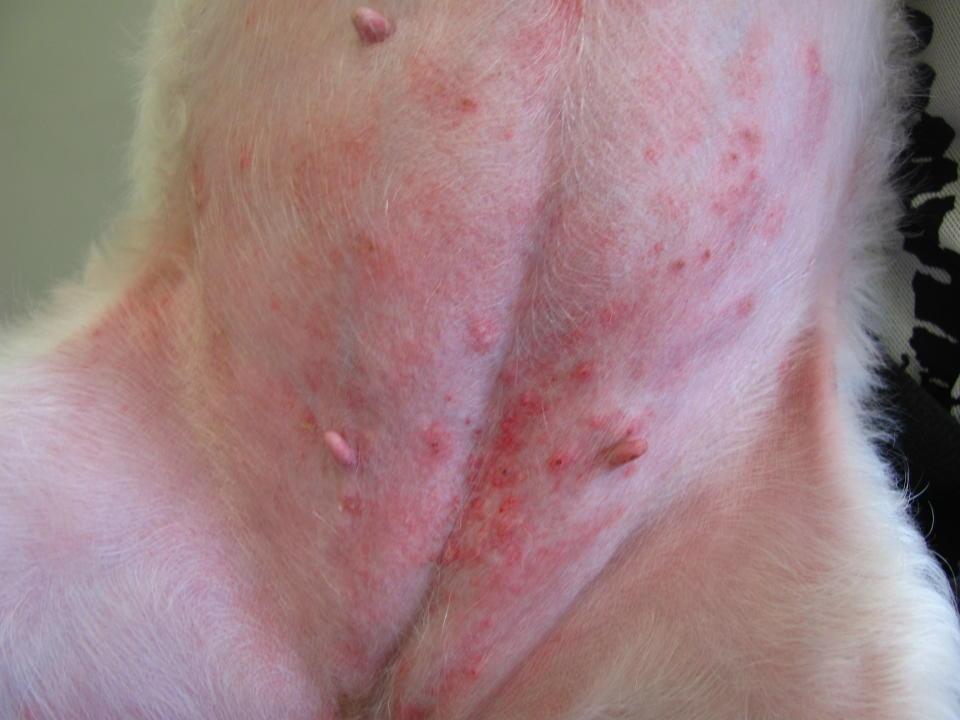What causes a dog rash on the belly?
A rash on a dog’s belly is a common concern for pet owners, often resulting from various underlying causes. It is essential to identify the cause of the rash early to ensure proper treatment and alleviate your dog’s discomfort. This guide will explore the common causes of a dog rash on the belly, helping you recognize potential issues and understand when to seek veterinary care.
1. Allergic Reactions
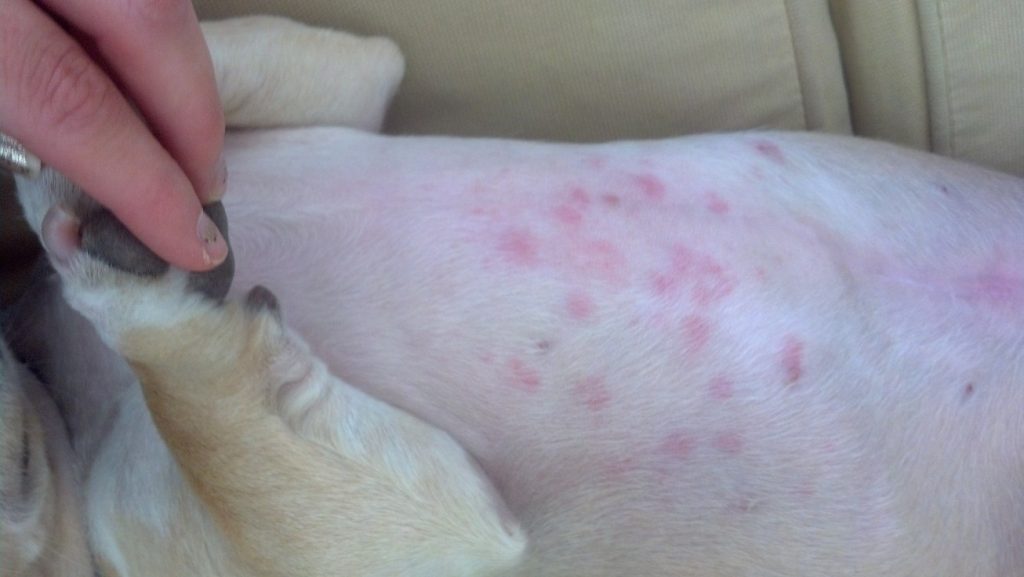
One of the most common causes of a rash on a dog’s belly is an allergic reaction. Dogs can develop allergies to certain foods, environmental factors (like pollen, dust mites, or mold), or even products they come in contact with, such as flea treatments, shampoos, or cleaning products.
When a dog’s immune system overreacts to an allergen, it can cause inflammation in the skin, leading to a rash. Allergic rashes are often red, itchy, and may appear in areas where your dog’s skin is more sensitive, like the belly. The rash may spread quickly, and the dog may lick or scratch the area to relieve the itching.
Symptoms of allergic rashes:
- Redness and inflammation
- Dry, flaky skin
- Itchiness and discomfort
- Hair loss in affected areas
2. Flea Infestations and Mites
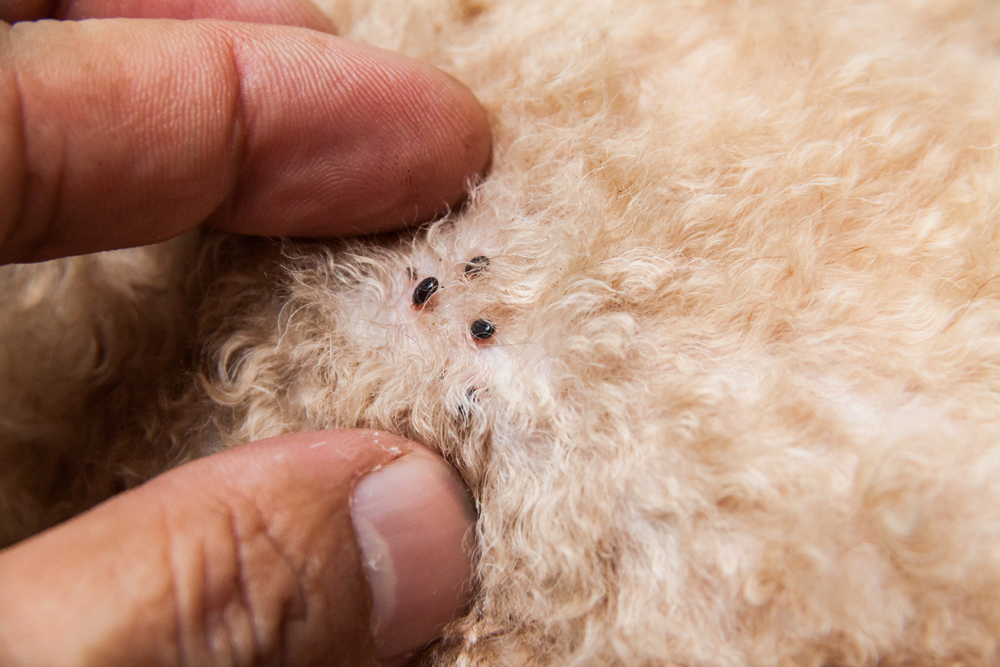
Fleas and mites are common external parasites that can lead to a rash on your dog’s belly. Flea bites can cause intense itching and lead to flea allergy dermatitis (FAD), an allergic reaction to the flea saliva. Mites, such as those responsible for mange, can also cause rashes and skin irritation.
The belly area is often more exposed and vulnerable to these parasites, which can cause itching, redness, and swelling. If your dog is scratching excessively or has noticeable flea dirt (small black specks) in their coat, a flea infestation may be the cause of the rash.
Signs of flea or mite infestations:
- Scratching or biting at the belly
- Visible fleas or flea dirt in the fur
- Red, inflamed skin with bumps or sores
3. Infections (Bacterial or Fungal)
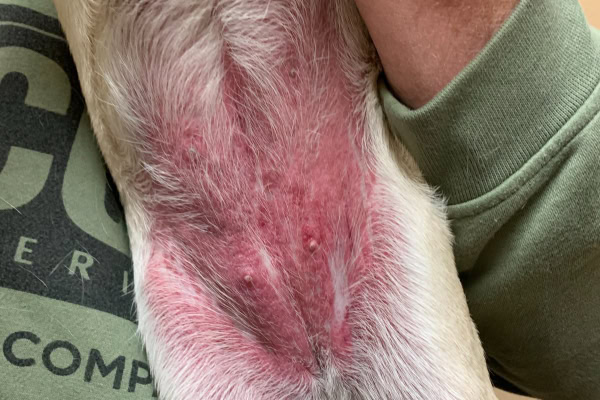
Bacterial and fungal infections can occur if the skin is broken due to excessive scratching or licking. These infections may cause a rash, sores, and pustules on the belly. Fungal infections like ringworm are highly contagious and can cause circular patches of hair loss and inflamed skin. Bacterial infections often appear as pus-filled sores and can spread rapidly if not treated.
Symptoms of skin infections:
- Pus-filled bumps or blisters
- Bad odor coming from the rash
- Crusty, scabby skin
- Hair loss in the affected areas
4. Hormonal Imbalances

Hormonal issues, such as hypothyroidism or Cushing’s disease, can also contribute to rashes on a dog’s belly. These conditions can lead to skin changes like thinning, dryness, and increased susceptibility to infections. Dogs with hormonal imbalances may experience rashes, especially in the belly and other sensitive areas.
Signs of hormonal imbalances:
- Thinning or patchy fur
- Excessive shedding
- Lethargy and weight gain (in hypothyroidism)
- Excessive drinking and urination (in Cushing’s disease)
5. Contact Dermatitis
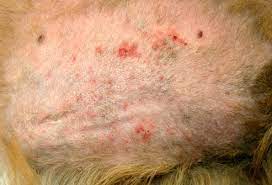
Contact dermatitis is an inflammatory skin condition that occurs when a dog’s skin comes into contact with an irritant. Common causes of contact dermatitis include certain plants, chemicals, or fabrics that the dog may encounter while walking or lying down. This condition can cause a localized rash on the belly, which may be itchy and inflamed.
Symptoms of contact dermatitis:
- Red, irritated skin
- Swelling or hives
- Itching or discomfort, particularly after exposure to an irritant
Conclusion:
A rash on your dog’s belly can have various causes, from allergies and flea infestations to infections and hormonal imbalances. Identifying the underlying cause of the rash is key to finding the right treatment. Always consult with your veterinarian if your dog’s rash persists or worsens, as prompt diagnosis and care are vital to your dog’s health.

